Apple introduced Always On Display with the iPhone 14 Pro series in 2022. Even the best mid-range Android phones have offered similar functionality for years, though this feature is sometimes referred to as Ambient Display or Active Display, depending on the brand. There’s also the ability to customize Always On Display, including different clock styles, themes, brightness, and color. It’s a nifty feature when trying to view the essential information, such as notifications, date and time, and battery status of your phone.
But if you’re new to Android, you might not know where to look or start since not all phones have this functionality, and customization screen options may vary by phone. So, to guide you through Android’s Always On Display, we’ve compiled a list of tutorials to teach you how to customize and activate or deactivate this feature.
What to know about Always On Display on Android phones
Always On Display puts your phone’s screen in a low-power state where it displays the time, date, and unread notification icons. This feature is primarily available on Android devices with AMOLED displays. LCD panels can’t support such a low-power state and consume too much power even at their lowest brightness.
Depending on the manufacturer’s implementation, your phone’s Always On Display could only show content in grayscale. On some phones, you can customize Always On Display with custom clocks, stickers, images, and more. To wake up your phone from Always On Display, tap its screen.
While Always On Display’s efficiency has improved over the years, it still consumes a lot of power. With the feature enabled, you can see an additional battery drain of 1% to 1.5% per hour on your phone. This should not be an issue if your Android phone offers good battery life. But using Always On Display might not be a good idea if it struggles to make it through the day.
0:52

How to check your phone’s battery health
A healthy battery is the secret to your phone’s durability. Learn how to diagnose and replace it
Some apps can add Always On Display functionality to unsupported phones. However, since it isn’t added natively, the feature would consume a large amount of power, leading to a drastic hit in your phone’s battery life.
How to turn Always On Display on or off on Samsung phones
The best Samsung phones come with a customizable Always On Display mode. You can set the phone’s display to turn on in a low-power state during a scheduled time, when a new notification comes in, or have it always on.
- Open the Settings menu on your Samsung Galaxy phone.
- Scroll down and select Lock screen and AOD.
- Tap Always On Display.
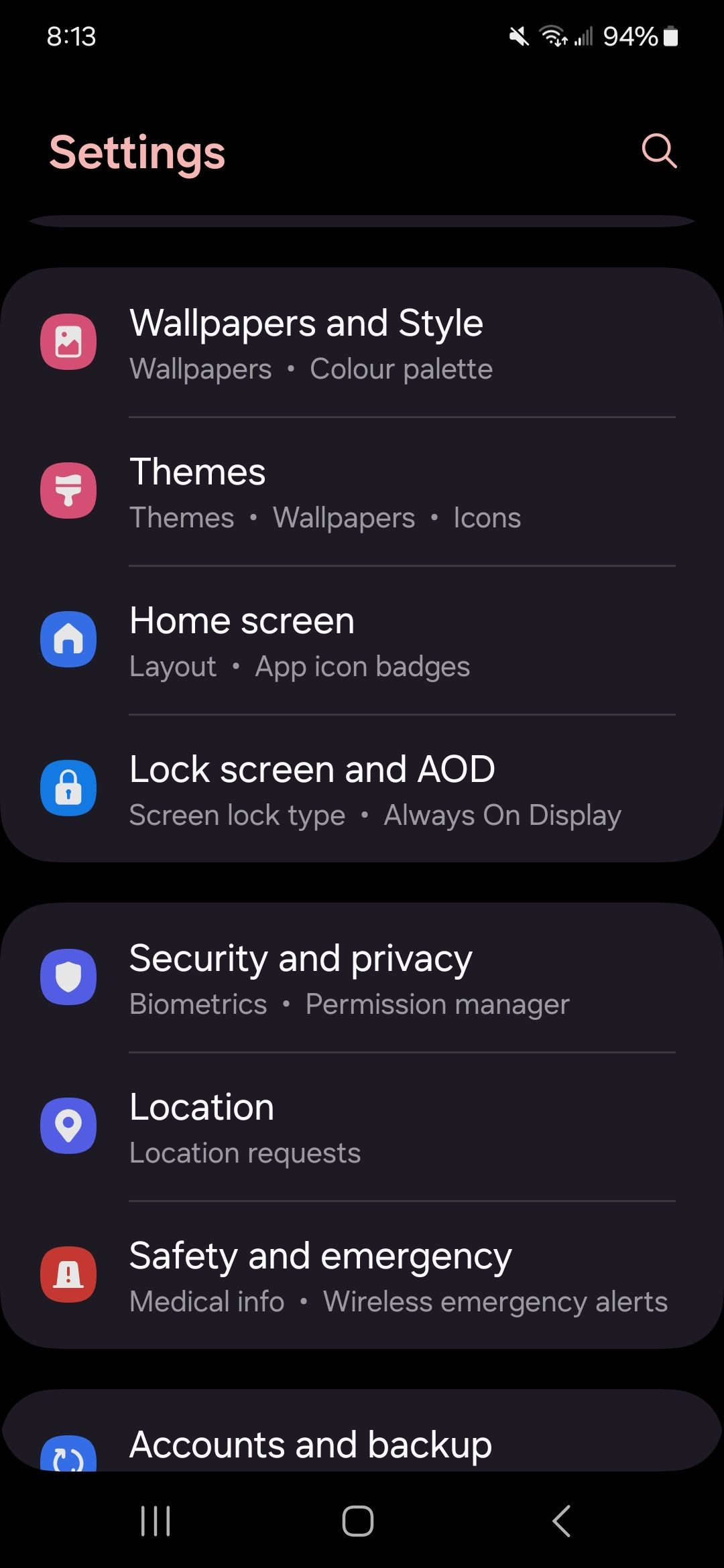
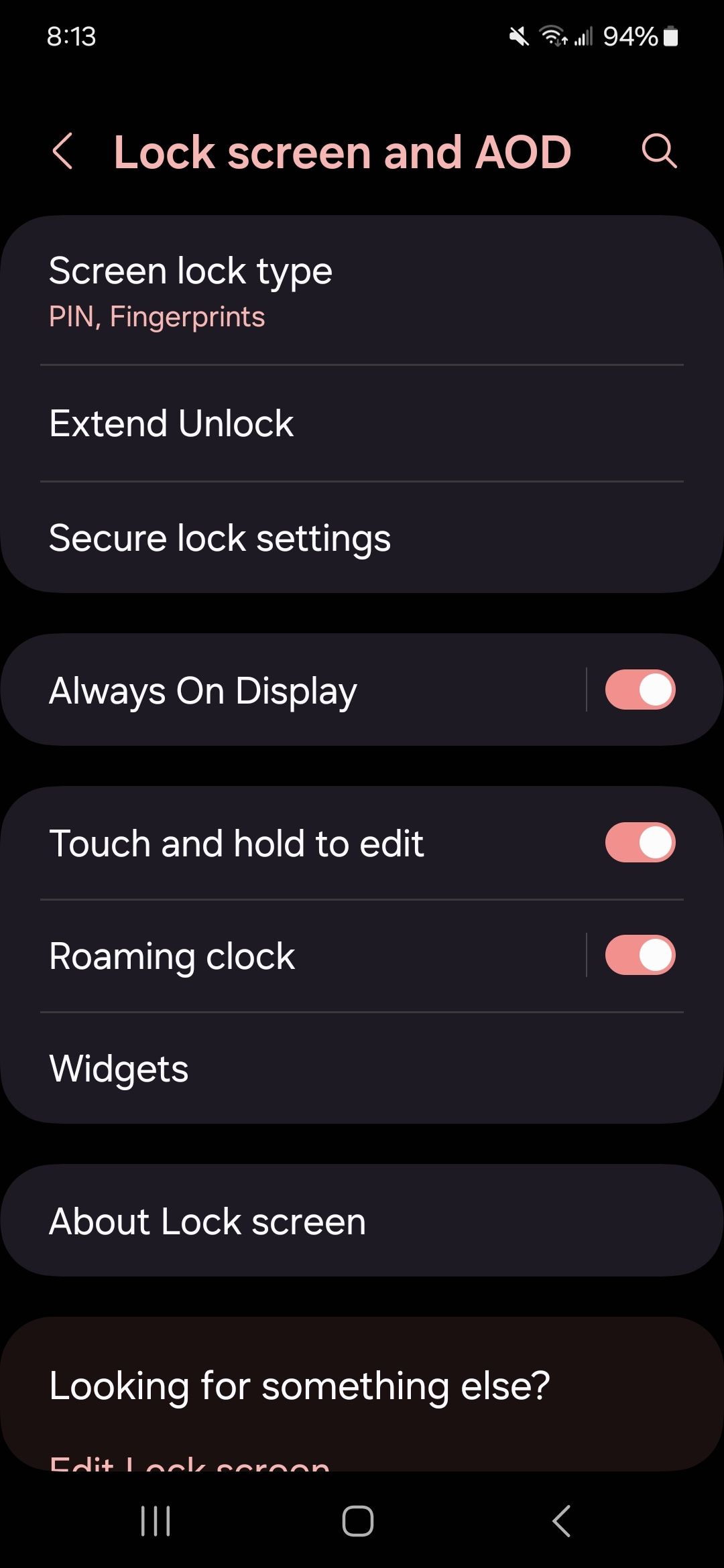
- Turn on the option and select when to show: Always, Tap to show, As scheduled, For new notifications.
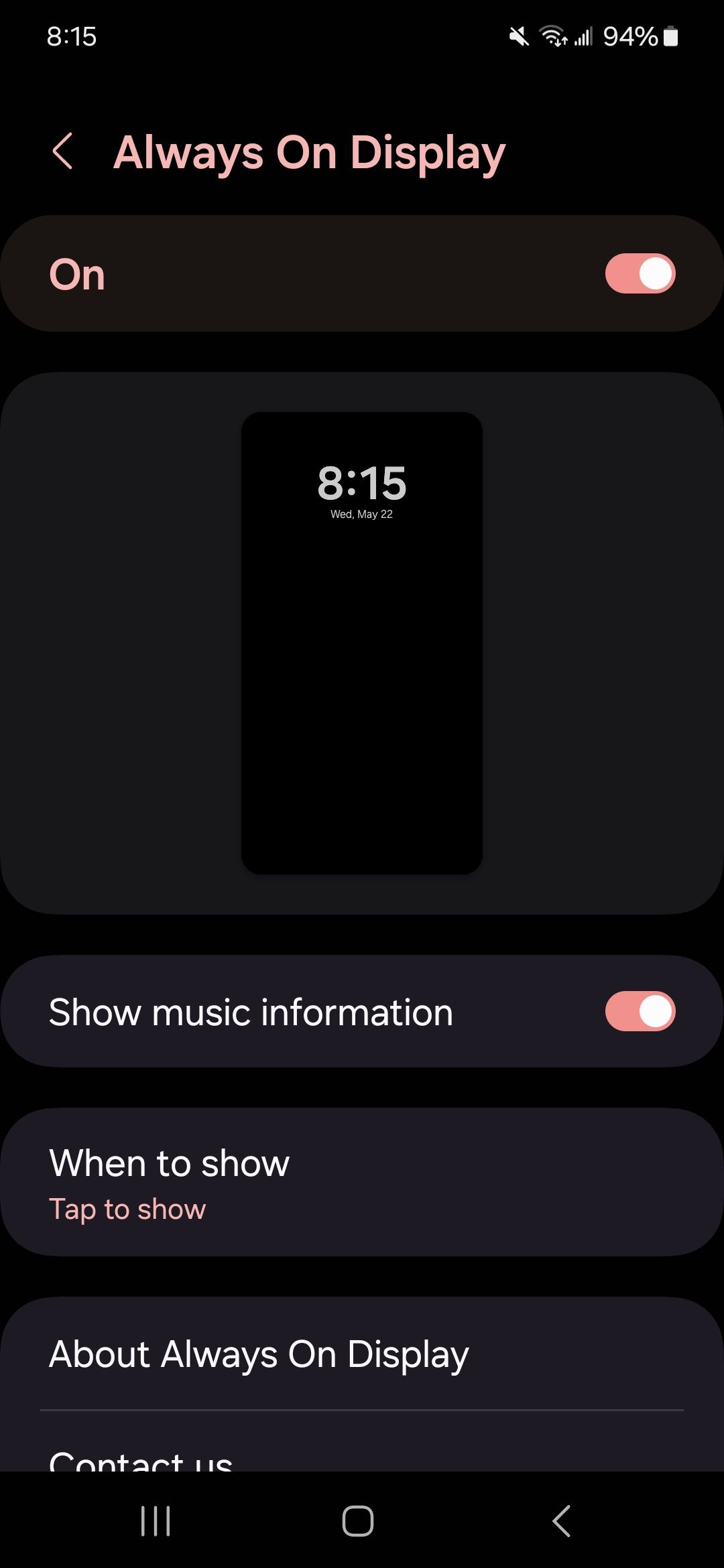
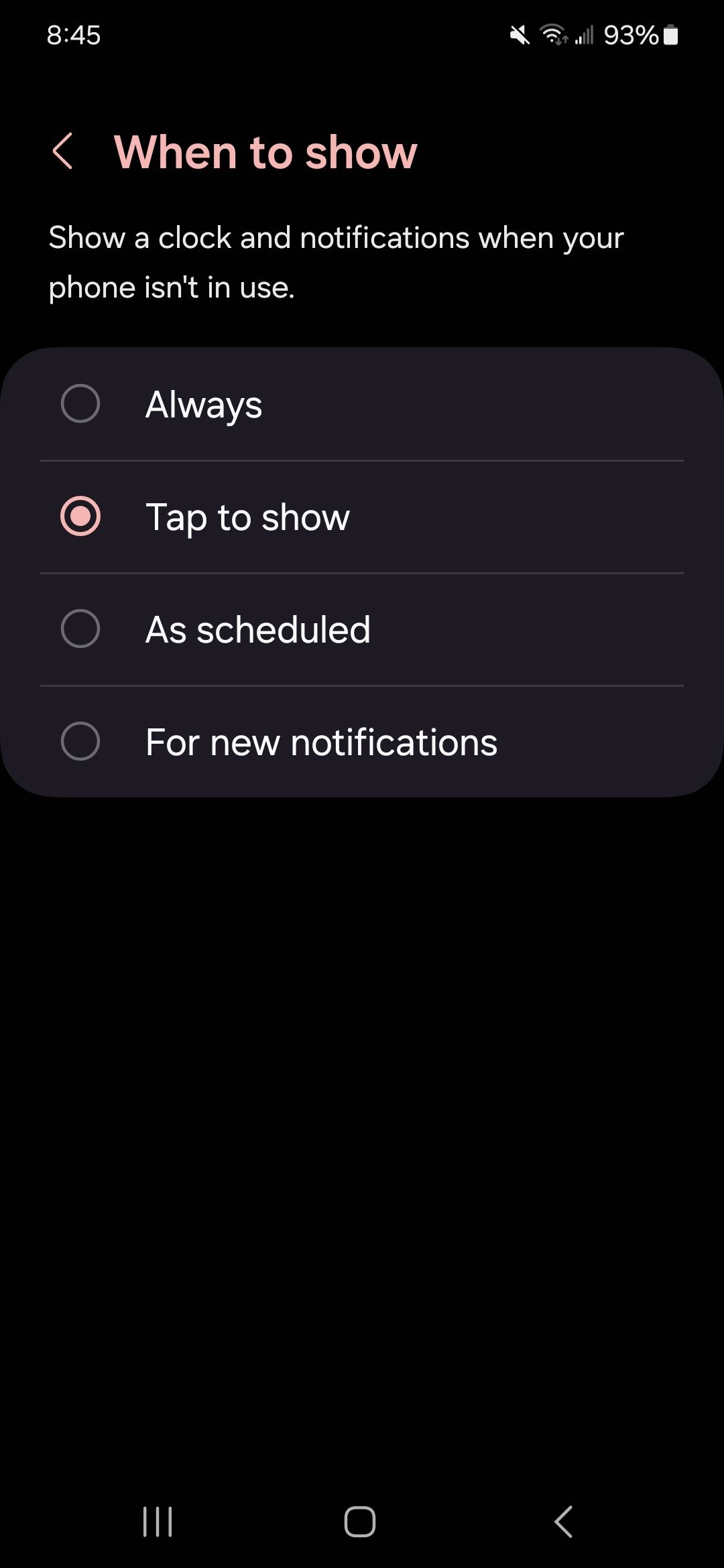
- Based on your preference, you can activate or deactivate music information.
To turn off Always On Display, go to the Always On Display menu and deactivate the option.
Since One UI 6.1, the Clock style setting has been removed from the Always On Display section. To change your clock style, select Edit Lock screen and tap on the clock.
If you’d like to customize Always On Display further (like manually adjusting the brightness), you can download the LockStar app from the Galaxy Store.
Those still using Samsung One UI 5 can find all these customizable features inside the app by visiting Always on Display from the Lock screen page.
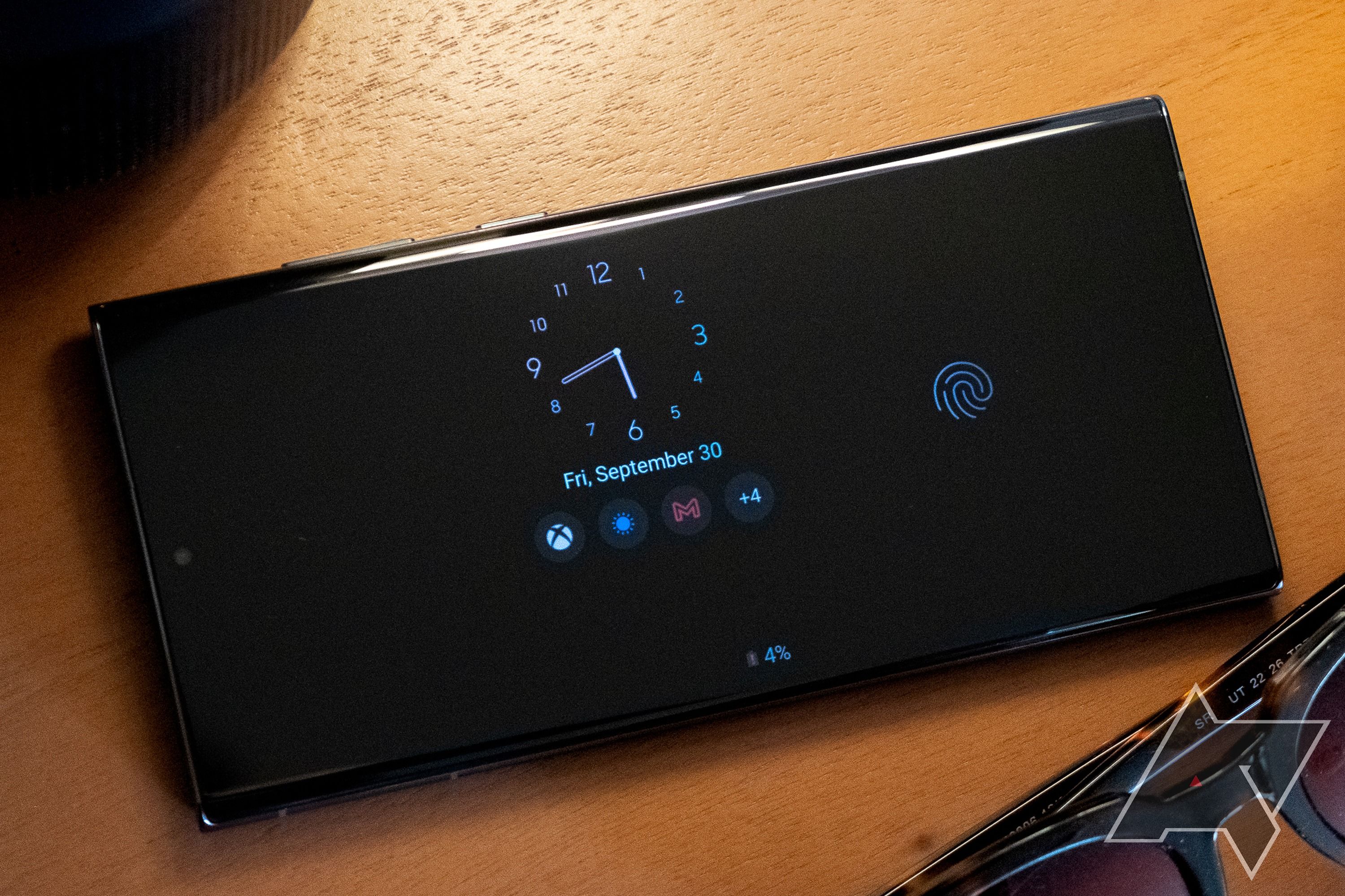
How to customize Always On Display with Samsung One UI 5
Use stickers, emoji, and more to customize your AOD
How to activate or deactivate Always On Display on Google Pixel
Google’s implementation for customizing Always On Displays is limited. However, it still includes the essentials — read below to learn more.
- Open the Settings menu from the app drawer or through the shortcut in the Quick Settings panel.
- Tap Display.
- Select Lock screen.
- Turn on the toggle for Always show time and info.
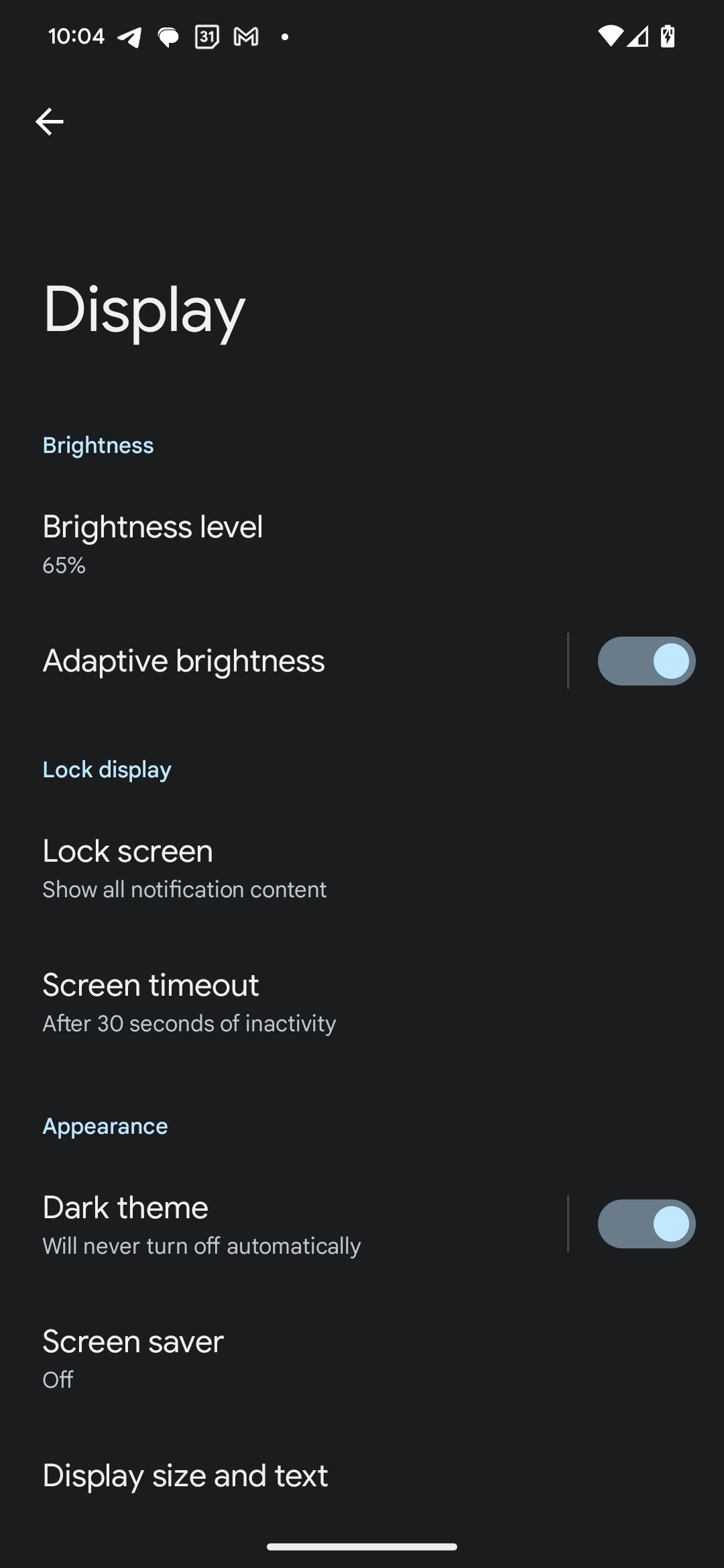
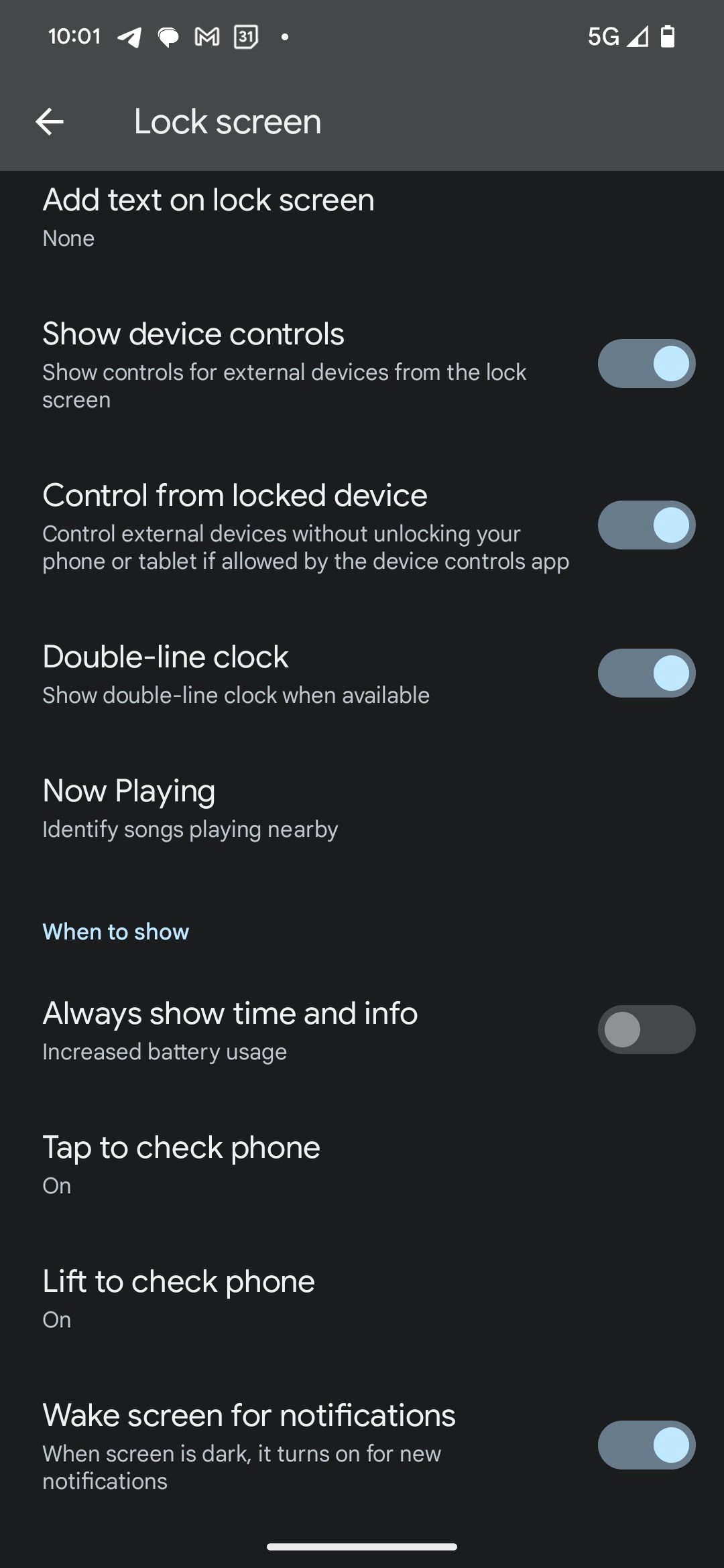
Your Pixel phone’s display will remain on and show the time, date, and unread notifications icons in a low-power grayscale state. A tap on the display wakes the phone and shows the lock screen with more details about the unread notifications.
Follow the same steps and turn off the toggle when you want to turn off Always On Display on your Pixel.
How to turn on and off Always On Display on OnePlus phones
Not all OnePlus phones support Always On Display. The feature is missing from some of the company’s budget Nord offerings.
- Open the Settings app on your OnePlus phone.
- Navigate to Wallpapers & Style > Always-On Display.
- Turn on the Always-On Display toggle.
- To show music playback and delivery tracking information, tap Contextual info and select the relevant options.
- You can scroll down to customize the Always On Display clock theme, add a personalized Bitmoji, Canvas, custom patterns, and more.

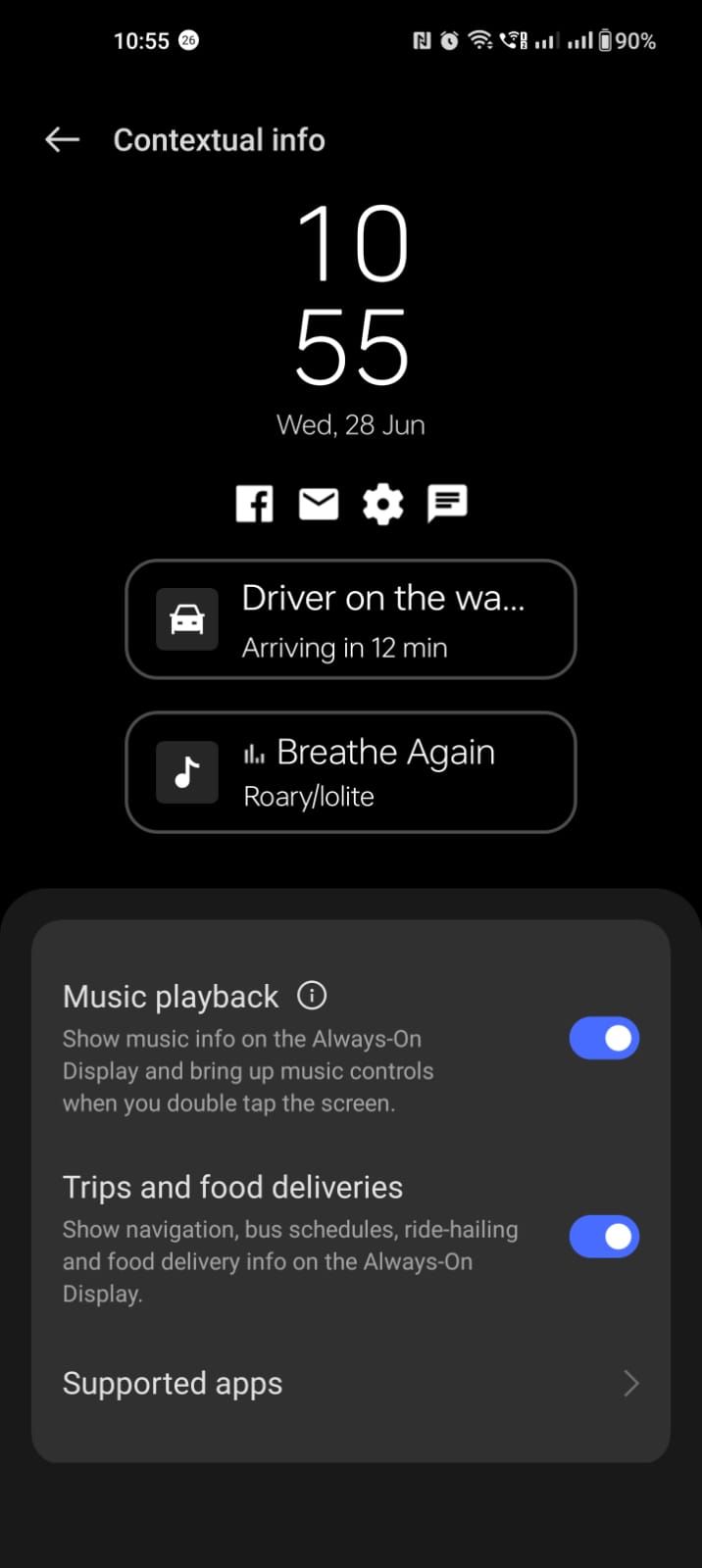
How to activate or deactivate Always On Display on Xiaomi and Poco phones
Xiaomi’s implementation of Always On Display in MIUI is rich, with plenty of clock designs. And unlike Google Pixel phones, Xiaomi’s Always On Display can display colors and doesn’t switch to grayscale mode.
- Open the Settings menu on your Xiaomi or Poco phone.
- Select Always-on display & Lock screen.
- Tap Always-on display.
- Turn on the Always-on display toggle.
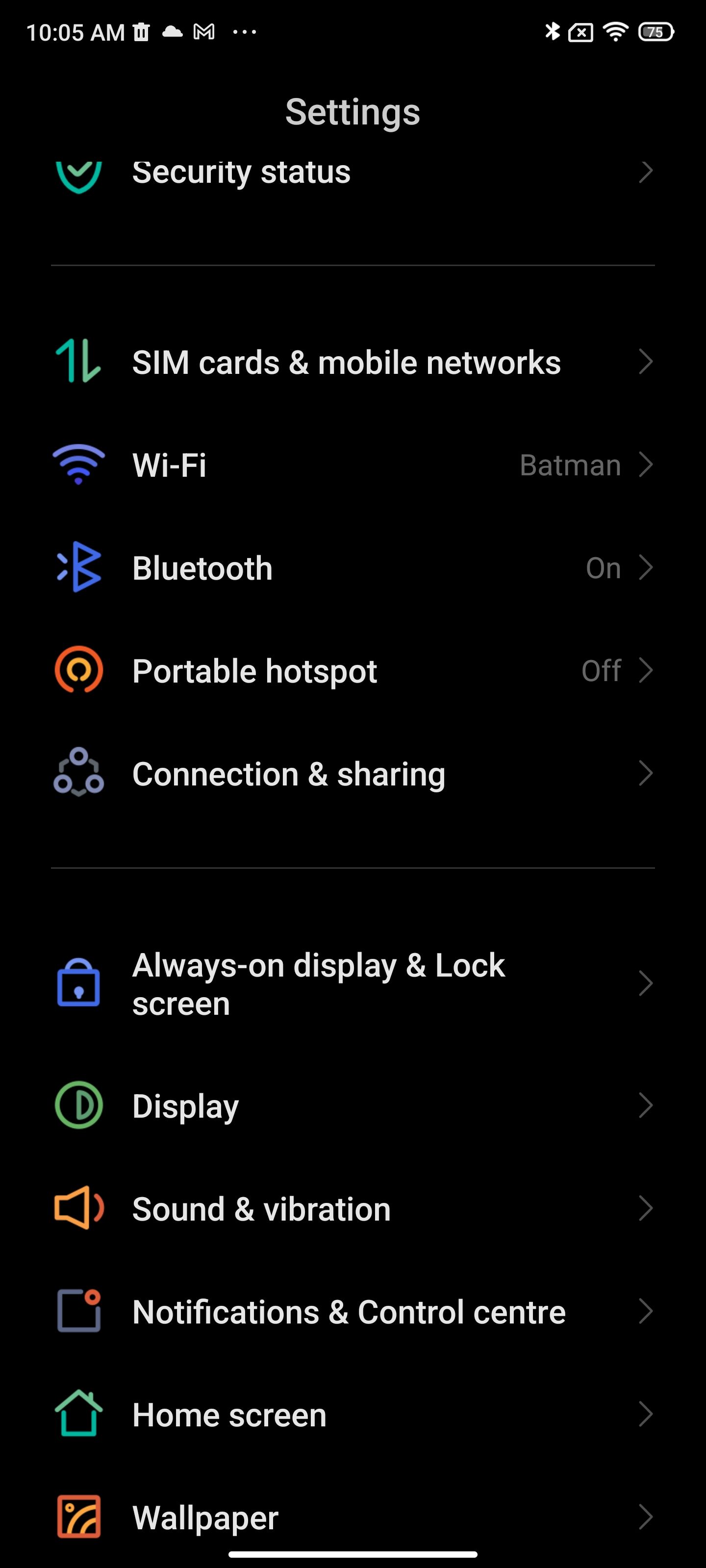
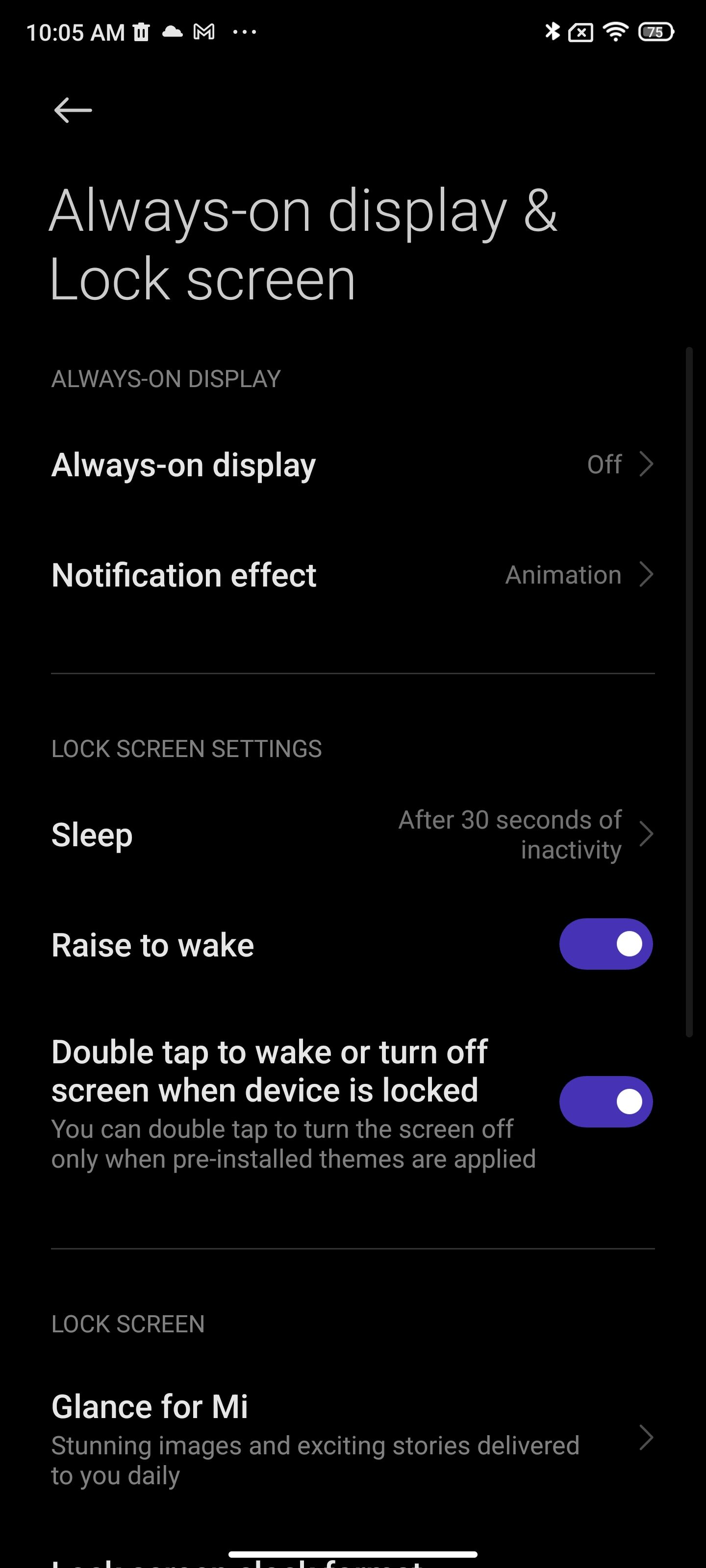
- Set the display to remain on only for 10 seconds after tapping, as per a schedule, or always from the Display items sub-menu.
- To customize the look of Always On Display, scroll down and select any theme you like. You can then tweak its color to your liking.
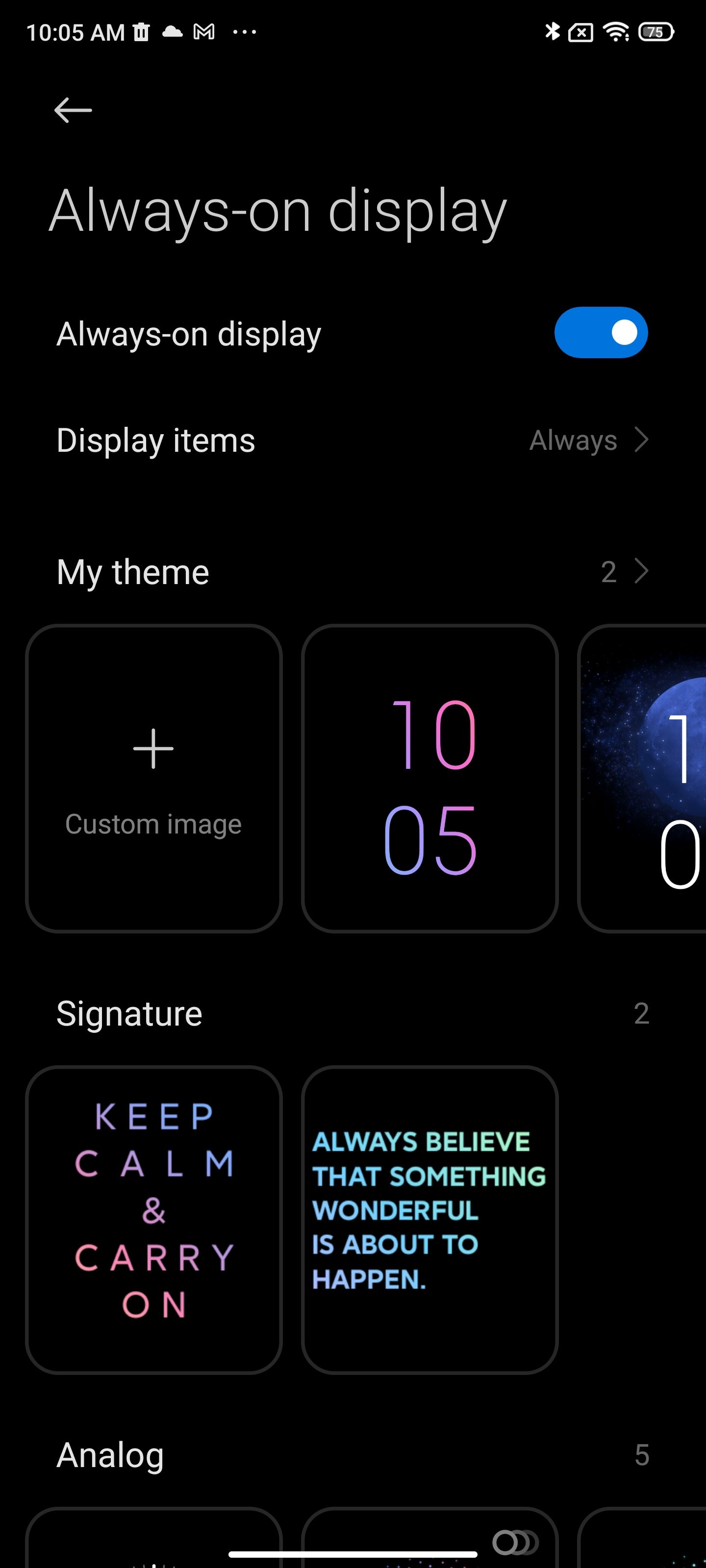
If you want to turn off Always On Display, follow the above guide until step 4 and deactivate the toggle.
Customize your Android phone
Always On Display is one of the many ways to personalize your Android phone. It lets you change your screen’s brightness and design style to match your preferences. Even if you don’t own an older phone, you can also customize your Android 12 and Android 13 phone’s Material You theme to make it yours. And if you prefer to change up your Android launcher, there are many great options you can select from.
Source link

